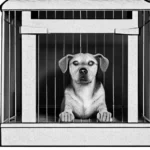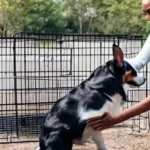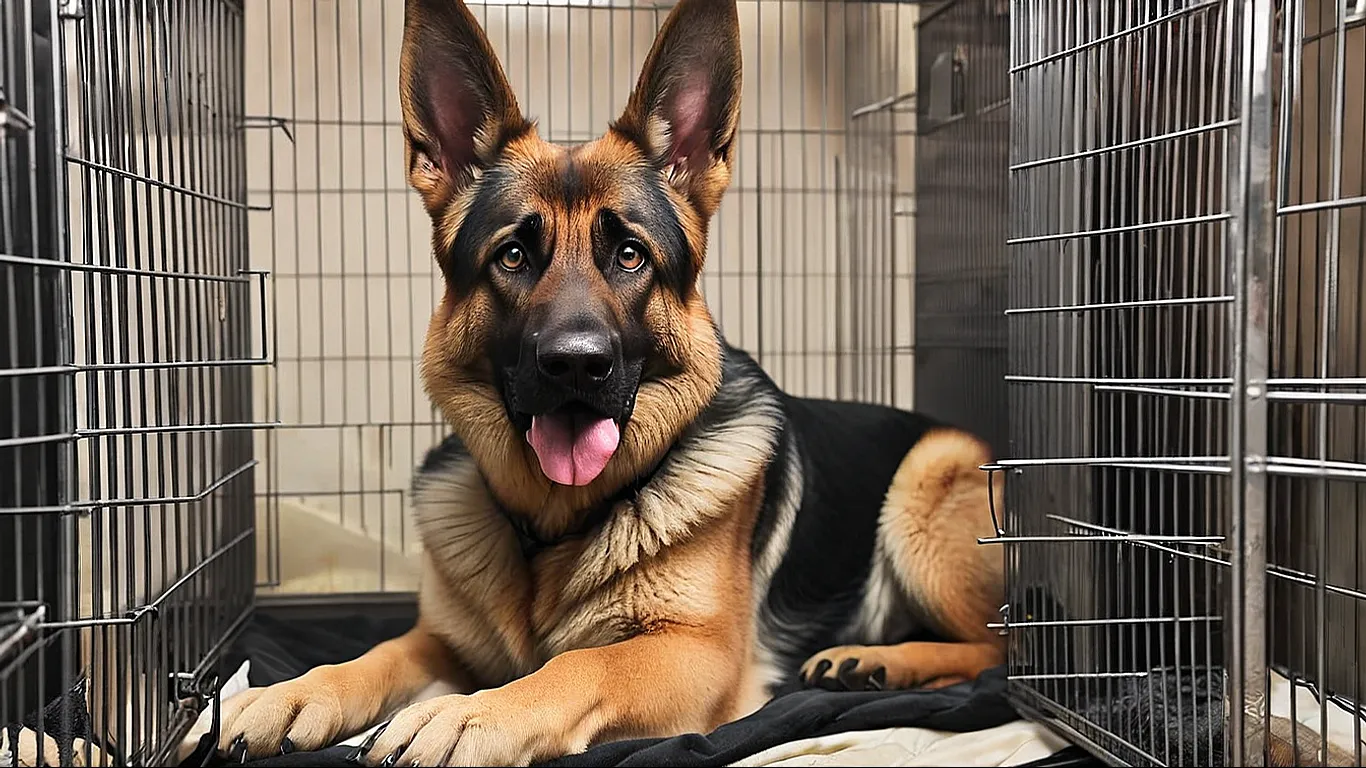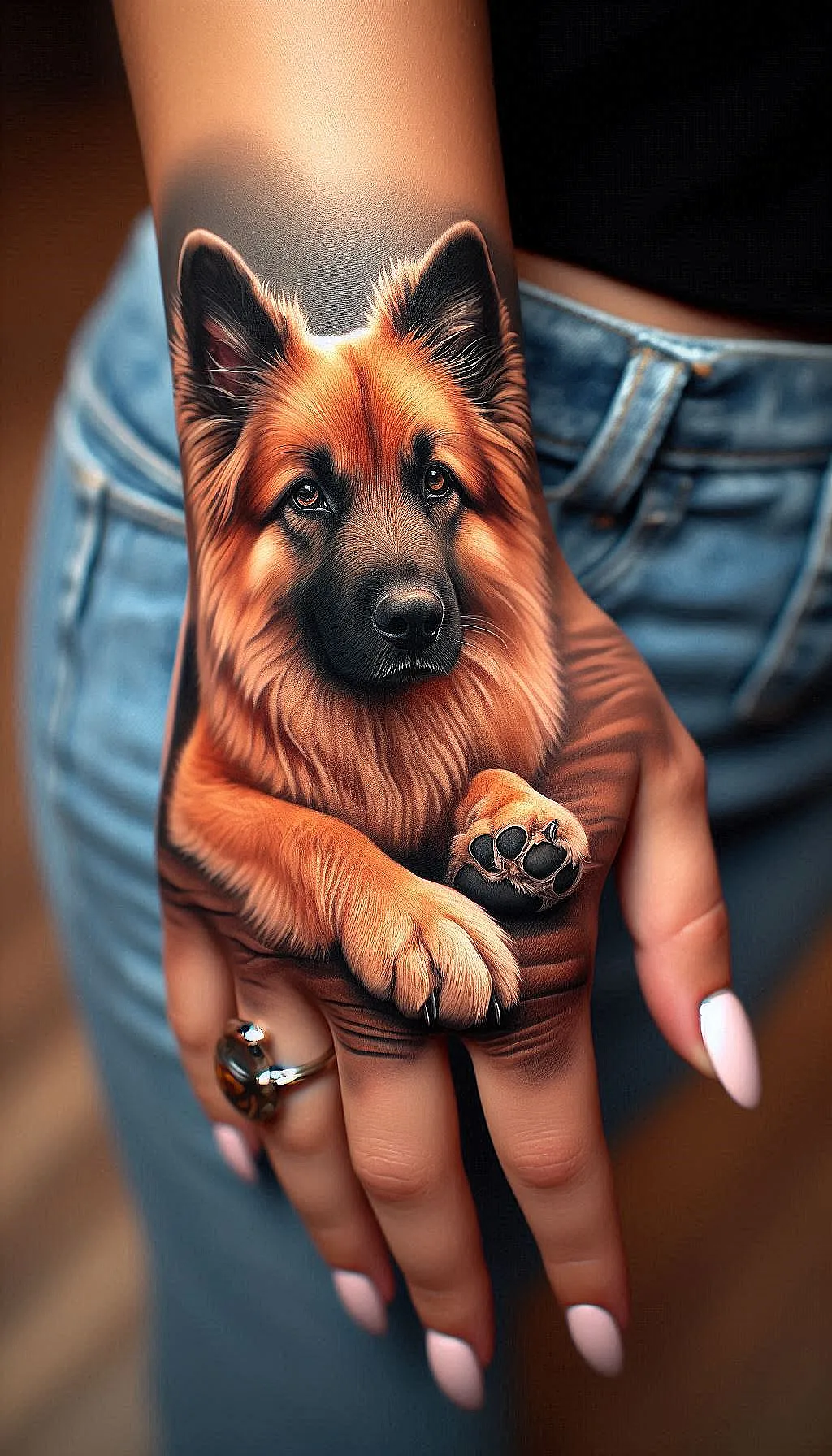Having the right size dog crate or kennel is essential for both your pup’s comfort and safety. But how do you know if the crate is too small?
In this blog post, we’ll discuss what to look out for so that you can make sure your furry friend has enough space to be comfortable in their crate.
11 Signs That Your Dog’s Crate is Too Small (Short Answer)
1. Your dog can’t turn around easily in the crate without hunching over.
2. Your dog is hunched when he stands or sits in the kennel.
3. Your pup is uncomfortable or anxious in the kennel.
4. Your pup is trying to escape from the kennel.
5. Your pup has joint or skin issues.
6. Your pup looks cramped or cramped in the kennel.
7. Your pup’s tail and legs are hanging out of the kennel.
8. The walls of the kennel seem too close to your pup’s body.
9. The size is larger than necessary for house training.
10. You need to use extra padding and blankets in order for your pup to be comfortable in the crate.
11. Your pup does not appear to enjoy being in the kennel.
Once it is figured out that your pooch’s kennel is small. To get a new crate you may want to follow these steps.
Measure Your Dog’s Height & Length
To ensure your pup is comfortable in its crate, you’ll first need to measure its length and height.
Consider the Sides of the Crate
Once you have the proper measurements of your pup, the next step is to consider the sides of the crate.
The correct size should leave enough space for your pup to move around comfortably, but it should not be too big. If it is big your pup may be unable to feel secure and comfortable.
But if it’s too short, he may feel cramped and unable to move around freely.
Using a measuring tape, make sure the sides are at least two inches taller than your pup’s standing height. This will ensure that they will have enough space to move around.
Check for Comfort and Mobility
It’s important to make sure your furry friend has enough room to move around and be comfortable.
If he hunched over or curled up, the kennel might be too small. To check for comfort and mobility, let your fido stand and sit and observe how he moves.
If he is able to sit up straight and move around without being constricted by the walls, then the kennel is a good fit.
Recognize Signs of Stress
If your pup looks in stress it means that he may feel congested in the crate.
The stress signs are excessive yawning, lip licking, and sneezing, as well as growling, barking, and pacing.
If you notice your dog having any of these behaviors, then it could be a sign that the kennel is too small.
Consider Your Dog’s Breed
The smallest breeds, like Chihuahuas, requires a smaller kennel than the larger breeds such as German Shepherds.
Measure from the nose to where their tail starts, plus add 2-4 inches for the minimum allowed length of the kennel. The kennel should be at least 6″ longer than your fido’s body and 6″ higher than shoulder for adequate comfort.
Take into Account Your Situation
Some situations you must keep in mind while choosing the crate for your four-legged friend
One thing keeps in mind that puppy grows quickly and will need a larger kennel as he matures.
If you plan to travel with your pup, you’ll need a small kennel so that it can fit in the car easily.
If you live in hot weather large kennel would be better so that your pup feels cool in hot weather and warm in cold weather.
Consider all of these factors carefully when choosing the right size kennel for your pup.
Things To Consider for Your Pup’s Well Being
Understand the Long Term Effects of a Too Small Crate
Too small crate for long term may be harmful to your furry friend. Because in a confined space for a long time, he may experience mental issues, neck and back pain, frustration, and anxiety
It can also change the dog’s behavior like he may start lots of barking, aggression, and destructive behavior.
So to ensure your beloved pup’s safety and well-being, make sure you choose the right size kennel for your pup
Use the Crate for Emergencies Only
Always remember, crates are only for emergencies or occasionally this should not regular.
If you put your dog always in a kennel it can cause anxiety and stress.
Do Dogs Feel Sad in Crate?

It is natural for dogs to feel some degree of sadness when first placed in a kennel. This is because it represents a confinement of their freedom, and they may feel lonely or anxious.
When Should You Stop Crate Training?

Once your puppy is around 2 yrs old, you can stop closing the door to the kennel. Also, once your dog will stay quietly in the crate for about 30 minutes with you mostly out of sight, you can begin leaving him crated.
Should You Cover Your Dog with a Blanket?
Yes, you should cover your pup with a blanket if he is feeling cold or suffer from anxiety, or other issues. The blanket provides him warmth and comfort.
Do Dogs Get Stressed in Crates?
Yes dogs can become stressed in crates if they spent long time in kennels. To overcome this situation you should always provide reinforcement to your furry friend to relax in the kennel.
Should a Dog Sleep in a Crate all Night?
Yes, it is beneficial for a puppy to sleep in a crate all night. It can help a puppy learn how to control their bladder and bowels and can prevent accidents in the house.
Once your puppy sleeps safely and soundly in the night, you will realize that kennel training is worth the effort.
Why Should a Dog Crate Not Be Too Big?
A dog crate should not be too large because it can make potty training harder. The reason is the dog may start to use part of it as a potty area. The kennel should be sized to the dog’s size, allowing them to stand up, sit, lie down, and stretch out comfortably.
Should You Force Dog into Crate at Night?
It is not recommended to force your pooch into a crate. Kennel training should be done gradually, making the crate a happy, comfortable place for your pooch.
It is best to provide positive reinforcement and rewards when your pup goes into the kennel, rather than forcing him in.
At What Age Do Dogs Stop Sleeping in a Kennel?
It all depends on the individual, but generally speaking, between 12 months to 15 months they start sleeping out of the kennel.
What Happens if You Crate a Dog Too Much?
It can damage your dog. He may develop aggression, withdrawal, hyperactivity, depression, eating disorders, obsessive licking, separation anxiety, inability to bond with humans, and muscle atrophy.








